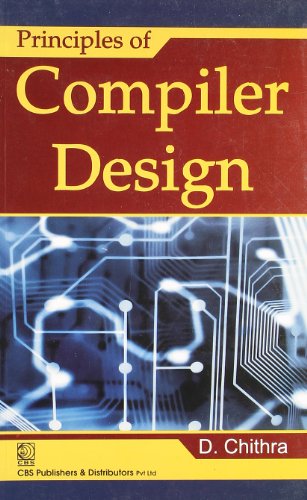
They also represent a choice of the data-flow analyses used to perform the optimization.

The branches from C l to C2 and C3 represent a choice of the method used to perform essentially the same optimization (namely, moving computations to places where they are per formed less frequently without changing the semantics of the program).
#Compiler design books code
If, on the other hand, some optimizations are performed on a medium-level, relatively machine-independent intermedi ate code and others are performed on low-level code after code generation (known as the “ mixed” model), then these optimizations are generally done on the medium-level interme diate code. If code selection is done before all optimizations other than those in box A (known as the “ low-level” model of optimizer struc ture), then these optimizations are performed on low-level code. These optimizations are typically performed on medium- or low-level intermediate code, depending on the overall organization of the compiler. Interprocedural register allocation Aggregation of global references Interprocedural I-cache optimization
#Compiler design books software
In-line expansion Leaf-routine optimization Shrink wrapping Machine idioms Tail merging Branch optimizations and conditional moves Dead-code elimination Software pipelining, with loop unrolling, variable expansion, register renaming, and hierarchical reduction Basic-block and branch scheduling 1 Register allocation by graph coloring Basic-block and branch scheduling 2 Intraprocedural I-cache optimization Instruction prefetching Data prefetching Branch prediction (to constant folding, algebraic simplifications, and reassociation) Usually, these optimizations are done very early in the compilation process, since compilation tends to lower the level of the code as it proceeds from one phase to the next. These optim izations typically are applied either to source code or to a high-level intermediate code that preserves loop structure and the sequence in which operations are performed and that has array accesses in essentially their source-code form. The correspondence between letters and code levels is as follows: The letters at the left in the diagram correspond to the levels o f code appropriate for the corresponding optim izations. Other orders are possible, and the exam ples o f real-world compilers in Chapter 21 present several alternatives, though none o f them includes all o f the optim iza tions in this diagram. Definition of basic block control flow graphs DAG representation of basic block, Advantages of DAG, Sources of optimization, Loop optimization, Idea about global data flow analysis, Loop invariant computation, Peephole optimization, Issues in design of code generator, A simple code generator, Code generation from DAG.Order o f Optimizations This flowchart represents a recommended order for performing optim izations in an aggres sive optimizing compiler. Storage organization Storage allocation, Strategies, Activation records,Accessing local and non-local names in a block structured language, Parameters passing, Symbol table organization, Data structures used in symbol tables.

Intermediate code forms using postfix notation, DAG, Three address code, TAC for various control structures, Representing TAC using triples and quadruples, Boolean expression and control structures. Syntax directed definitions Construction of syntax trees, S-Attributed Definition, L-attributed definitions, Top down translation.

Parser generator: YACC error handling in LR parsers. Operator precedence parsing, Introduction of automatic Top down parsing, LL grammars & passers error handling of LL parser, Recursive descent parsing predictive parsers, Bottom up parsing, Shift reduce parsing, LR parsers,Construction of SLR, Conical LR & LALR parsing tables, parsing with ambiguous grammar.

Review of CFG Ambiguity of grammars: Introduction to parsing. Compiler,Translator, Interpreter definition, Phase of compiler, Bootstrapping, Review of Finite automata lexical analyzer, Input, Recognition of tokens, Idea about LEX:A lexical analyzer generator, Error handling. Introduction: Objective, scope and outcome of the course.


 0 kommentar(er)
0 kommentar(er)
